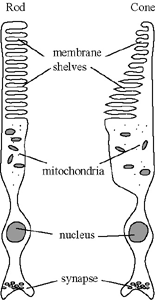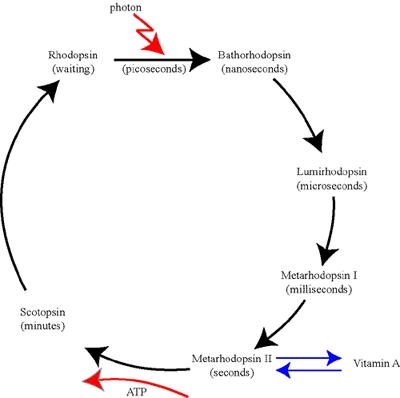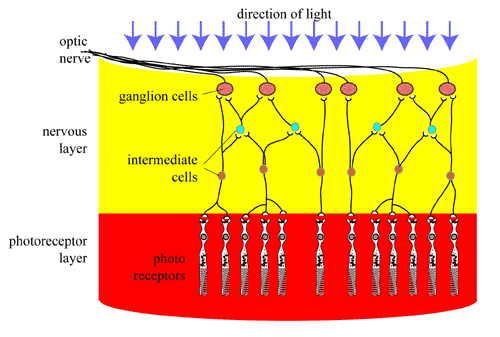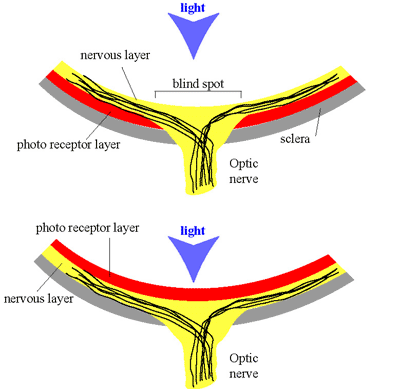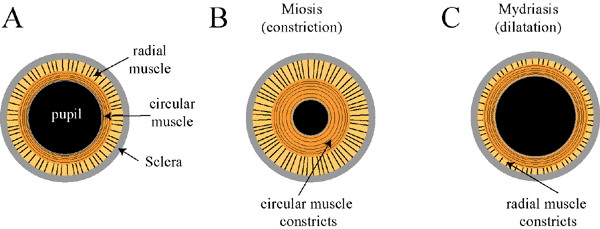A. The Retina
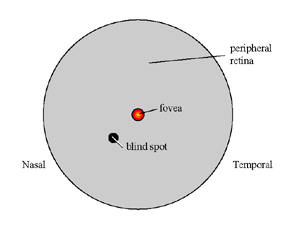 |
The retina consists of: the fovea: located in the center. This is a very small area (< 1 square millimeter) that contains three types of cone photoreceptors (for red, green and blue). This small area provides for sharp and colour vision. (memory trick; cone = colour) the peripheral retina which contains only rod photoreceptors. These rods only sense black and white but are more sensitive than the cones. There is also a blind spot, located in the inferior and nasal quadrant of the eye where the optical nerves exit the eye on their way to the brain. |
